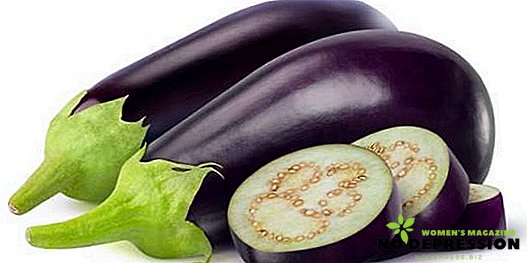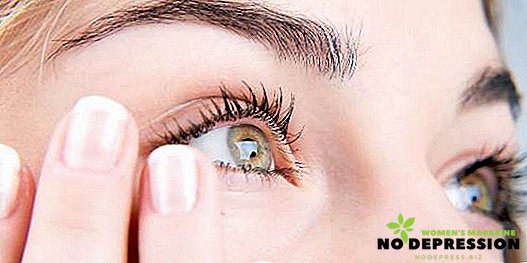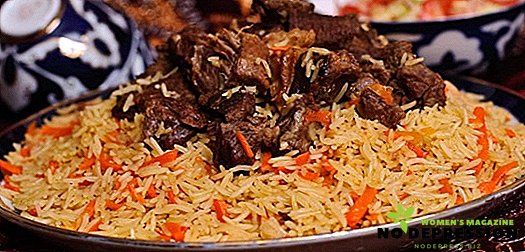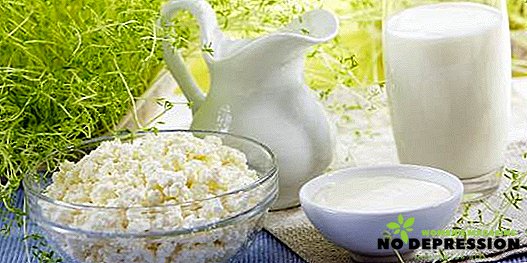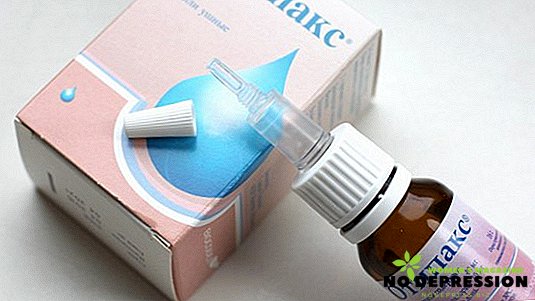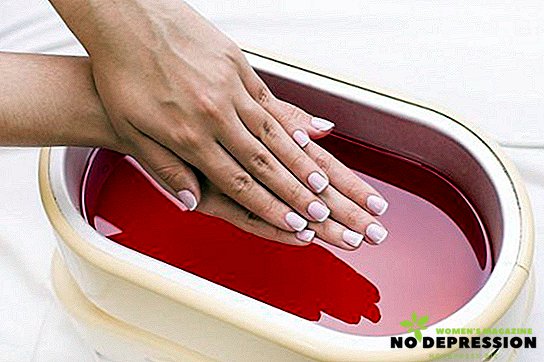For how many years mankind has existed, for so many years its beautiful half has been searching for various images in order to look original and beautiful. We must pay tribute to the ladies - they are not only busy searching, but really are finding more and more new ways to amaze others.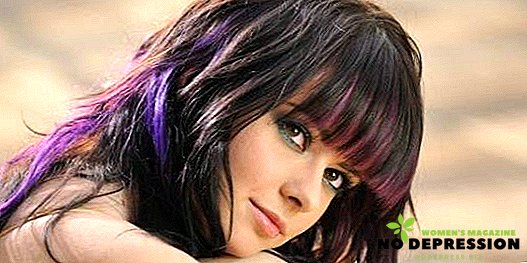
One of the main elements of beauty are hair. They are noticed among the first, they will present a woman at first sight, and therefore should look accordingly. One of the wonderful methods of coloring is coloring - creating several different shades within the same hairstyle.
There is an opinion that coloring appeared in the late 1980s and became a "logical continuation" of highlighting. This is not entirely true, if you argue from a simple philistine point of view. “It’s not at all like that!”, Professional stylists would hyster, rolling their eyes. And in many ways they are right.
- Firstly, highlighting implies only a longitudinal coloring method, while coloring can be both longitudinal and transverse.
- Secondly, when highlighting, colored curls differ from the general color radically (light on dark or vice versa), and coloring can be characterized by smooth transitions between tones.
- And finally, third, highlighting is, as a rule, two colors. Coloring can include up to 15 different shades! Often one of the tones is native.
You should know: "Maybe" does not mean "must"! The number of colors varies from 2 to 10, in rare cases up to 15. The main thing is a gradual transition from one to another.
Coloring on dark hair: advantages and disadvantages
Theoretically, dark hair is a great opportunity for coloring. However, in practice, the choice of colors is quite limited - in fact, one of them should be left to your own. Therefore, the choice of gamma for brunettes is made within a relatively dark spectrum (with the exception of "radical" models). This is the first drawback of such staining.
If not to count the rare cases when the introduced color is darker than the native one, the hair will have to be discolored, which does not always have a positive effect on them. This is the second and last flaw!
At the same time advantages can be listed for a long time. Here are just some of them:
- hairstyle is perceived more volumetric;
- looks natural (except in cases of coloring with unnatural colors);
- light strands of the face emphasize the features;
- suitable for all ages, incl. is a great way to hide gray hair;
- natural colors help to solve the issue of regrown roots, if the deepest layer is left natural.
It should be understood that all the rules are conditional. Nothing prevents risky individuals to break down stereotypes and use, for example, platinum ends on the roots of the color of a raven wing or use pink with green. It will also be coloring - extreme, but coloring.
What suits brunettes
Consider the main types of coloring on dark hair. First of all, you need to understand that this type of hair coloring is both longitudinal and transverse. The already mentioned light ends with dark roots are a vivid example of longitudinal coloring.
The two most popular "horizontal" methods are called the French words "omme" and, following in the wake of trends, sombre. Sometimes both of these methods are confused, although, with some similarities, they have a large number of differences:
- Ombre - light tips with dark roots. The color difference is dramatic. The transition is smooth (up to 10 shades), but concentrated in the middle of the length of the hair.
- Sombre also implies brightening the ends with dark roots, but the transition is stretched to almost the entire length of the hair, and the difference in shades is not strong. This method looks more natural, imitating burnt curls. Sometimes for a sombre use not all volume of hair, but separate locks.
Important: There is the concept of "color coloring" (Shaumbra) - it means that the colors used are unnatural shades (red, purple, etc.). This method can be both longitudinal and transverse.
Longitudinal coloring of dark hair is more diverse. There are many ways, the main ones are described below.
Booking
The most popular method. Its essence is simple - small strands are painted in various shades of the native color. It creates the effect of freshness, shine, and hair looks more volumetric. The big plus of brondirovaniya (in the absence of gray hair or the desire to paint them) is a partial color, i.e. most hairs are not exposed to dye.
Zone coloring
As the name implies - this is a partial color in some areas. Ideally helps to highlight some of the features or, conversely, hide the flaws. For example, lighter stripes along the contour of the face will make its perception fresher, younger and more interesting.
Micro-colouration
"The effect of the sunbeam" - so you can call this method. Lighter make a few strands, literally hairs, the upper layer. And often this is not done along the entire length, but in certain zones.
Coloring options in length: for short, medium or long hair
There are practically no restrictions on coloring associated with the length of the hair. Almost everything is permissible, and the main restrictions apply only to three points: the type of person, fantasy and skill of the stylist.
Speaking from a purely statistical point of view, the following conventions are more often observed:
- Coloring is applied to long hair by natural scale. Two or three shades will be quite enough.
- The average length is a real testing ground. On these hairstyles try anything. Easily apply up to 8 and even 10 shades.
- For short hair often used longitudinal coloring. Shades use a little. The big advantage of coloring for a short haircut is the ability to change the perception of colors, depending on the style.
How to make bright dark hair: creative coloring
The concept of "creative coloring" includes methods of coloring, in which the fantasies of stylists are not limited to almost anything. These methods are so far from natural shades that the acquired images can be called magical, fabulous, stylized fantasy.
Silver-purple, red, turning into a steel gray hair or an inconceivable combination of pink and green - such approaches look very original and stylish. Often used for youth images, but can be useful and more adult ladies, if you combine shades with your color.
Important: The more multi-colored strands in a hairstyle, the greater the number of dark hair must be brightened. Often, shampoos or other easily washed products are used for previously bleached hair. This allows you to quickly change the image, without unnecessary harm to the hair.
For short hair, creative coloring is sometimes combined with extreme haircuts: a platform, Mohawk, asymmetrical car, etc.
Dark hair features
So, what should be considered when coloring dark hair? Applying any of the methods of coloring on dark hair, you need to know common nuances for all brunettes:
- It has been repeatedly pointed out that dark hair will have to lighten.
- When choosing natural tones there is a need to re-paint them with shades close to the native one. Neither each color corresponds to that indicated on the package, the result may be different. It is better to entrust the choice of paint and tones to a specialist.
- It is impossible to carry out coloring immediately after clarification! There should be at least three days between these procedures.
Technology coloring black hair in the barbershop and at home
 The simplest way to perform coloring is ... going to the hairdresser. The professional will correctly select the paint, advise the style, the number of shades and, most importantly, perform the procedure correctly and with the least harm to the hair.
The simplest way to perform coloring is ... going to the hairdresser. The professional will correctly select the paint, advise the style, the number of shades and, most importantly, perform the procedure correctly and with the least harm to the hair.
All that the client can observe in the stylist's chair is how she was separated by several strands (ideally, those that had already been clarified), painted, shifted with strips of foil or other material (so that the neighboring hair did not stain), waited-washed-laid. Turned to the mirror and - voila! - Coloring is ready. Magic? Rather professionalism!
Coloring yourself, at home, is not recommended. But, as they say in the classics, if you can not, but you want it, then ... go ahead! Risky, they say, luck. First you need to prepare the paint and tools: a comb with a thin long handle (to separate the strands), a wide brush for applying compositions, foil and gloves. Then begins the process of magic for dark hair:
- In the fairy tale, Cinderella turned into a princess. Those who wish to get well painted are waiting for the reverse process: becoming muddy - three days before the event, washing the head is canceled! Dirty hair paint "falls" better.
- To the mirror! Separated all waiting for coloring strands. The rest of the hair is removed. Strands discolor! If part of the hair remains natural color, it is not worth bleaching hair completely.
- The head is washed, dried and ... sent to the next three-day cycle of dirt.
- Again to the mirror. Each order is taken separately. A foil about three centimeters wide is enclosed under it. Paint is applied. The foil is wrapped so as not to stain other hair.
- It remains to wait, wash and marvel at the result!
When self-coloring it is better to fulfill the following conditions:
- apply no more than 2-3 shades;
- follow the instructions of the coloring agents exactly;
- paint over strands no wider than 5 mm;
- use balm for dyed hair.
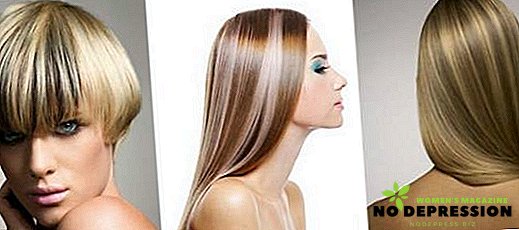
Paint selection
The final result depends on the quality of the coloring agents. It is extremely difficult to give any special recommendations on the choice of dye for coloring black hair in order to find the right ones (even the highest quality ones). A non-professional rarely does this task on his own. In this case, it is better to buy ready-made kits for coloring! They have everything you need for such experiments, and most importantly, detailed instructions are available.
It is equally important to choose a quality bleaching agent. From this depends on the health of the hair, and the specific shade of the future coloring.
Aftercare
After dyeing, the hair may become weak. This should not be allowed, and therefore it is necessary to properly care for them after coloring:
- Any detergents, as well as rinses and conditioners need to choose a special - for colored hair. These must be high-quality, well-proven substances.
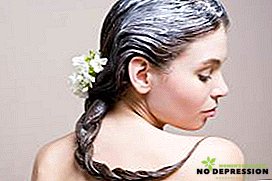
- Nutrient masks should be used, but they should also be of special quality and high quality.
- A good means of care are oils (primarily coconut and argan) - they are rubbed into the ends of the hair every day half an hour before bedtime.
Coloring is a great way to change the image and create a stylish fashionable image. Like any coloring, this method can damage the hair. However, if you know and follow the simple rules of preparing and conducting this procedure, and carefully take care of your hair afterwards, any woman will look like a real princess, and Cinderella will remain in your memory a fleeting memory!
The process of coloring dark colored hair is shown in the following video.






